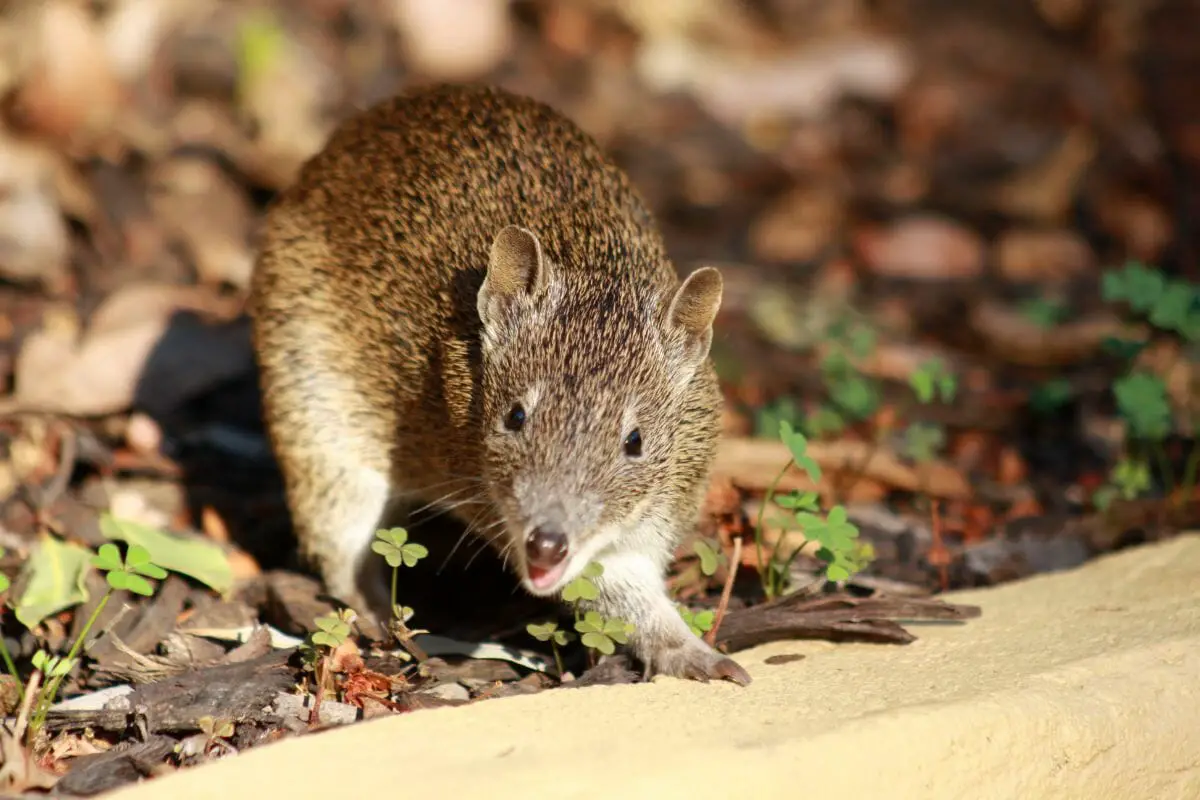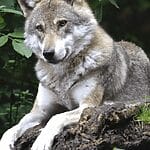While they are definitely a lively and vibrant animal that make for great and lovable companions, there’s no denying that caring for a bandicoot can be hard work, and while it is definitely rewarding in the end when you establish a close bond with your marsupial buddy, it’s crucial for every owner to know exactly how to care for this small and furry creature.
This includes their diet, which can be a little hard to adjust to at first since bandicoots do require very specific types of foods to keep them healthy and satisfied, however once you get used to it, you’ll know exactly how to keep your small excitable pet happy and fed each and every day.

Here is the full breakdown of what you should feed a bandicoot in care, along with a few tips to make the whole process as easy as possible.
What Is The Bandicoot Diet?
Bandicoots are known as opportunistic omnivores, meaning they will eat a range of both plants and animals(see also: Animals That Eat Both Plants And Animals).
In terms of the animals, bandicoots tend to favor insects since these can easily be rooted out by the bandicoot’s large and long nose and can be consumed very quickly while also providing them with a good dose of daily nutrients.
Other small animals they enjoy eating include spiders, crickets, beetles, earthworms, centipedes and millipedes.
These small creatures are an incredible source of protein for the bandicoot along with containing just enough fat to keep them feeling healthy and energized.
In terms of their food outside of animals, bandicoots love to burrow under the surface which means they will often dig up and consume seeds, roots, fruits, and even fungi.
Depending on the type of seed and the piece of fruit, these provide the bandicoot with a healthy dose of extra protein, some fiber, amino acids, vitamins, and antioxidants to help keep them healthy and resist diseases and infections.
Most types of bandicoots will not require much to drink, especially the species that tend to occupy the desserts who get all the moisture they need from their food, however, both water and milk are great choices for keeping them feeling refreshed.
Bandicoot Feeding Guide
Bandicoot Feeding Guide
Baby bandicoots are those that have been alive for under 5 months, however because it can often be hard to tell how old a young bandicoot is just from looking at it, a far easier method is seeing how much it weighs which can give you a much clearer idea of their nutritional needs.
With that being said, here is a full feeding guide for each stage of the bandicoot’s life up until it becomes an adult.
Baby Bandicoot: 35 grams
For baby bandicoots who have only recently been born and weigh up to 35 grams, you will want to only be feeding them a special milk formula that contains a mixture of water and milk, along with a tiny amount of added nutrition to help them grow.
While you can make a simple mixture yourself of 2ml of milk and 50 ml of water, you can also try using one of the pre-made formulas that can be found across the market, with the most popular options being Biolac, Wombaroo and Di-Vetelact.
This formula should be fed to the baby bandicoot five times a day, however, if you notice that they don’t want to drink at that time, never try to force them and instead, wait at least half an hour before presenting them with the mixture again.
Finally, if you are caring for baby bandicoots who have been orphaned, it is often better to use these pre-made formulas so that they are guaranteed to receive all the added nutrients and supplements necessary for their growth stage.

Juvenile Bandicoot: 50 grams
After a few weeks, when the bandicoot is a little older and heavier, keep feeding them the same mixture while also adding in a cup of mashed banana.
While you can add this to the mixture to make it nice and thick, you can also keep it in a separate bowl or dish.
Because they are still considered very young, and their teeth aren’t yet strong enough to chew down on solid foods, mashed bananas work the best in introducing the bandicoots to food in a safe and enjoyable way, while also providing them with plenty of vitamins and minerals including potassium and fiber.
Because of the added food into their diet, by this stage, you will be able to cut down the meals and milk formula to only four times a day, however if you do find that the bandicoot is getting a little restless, there’s no harm in giving them that fifth serving near the end of the day.
Young Bandicoot: 65 Grams
Continue feeding the bandicoot the milk formula four times a day, and start placing leaf litter around the cage for them to eat. This is an easy way to get the bandicoot to start chewing down more on their food.
Alongside the leaves, you can now start introducing some small creatures into the diet, however the best choice for this would be mealworms since they are the softest to bite into and aren’t too difficult for the bandicoot to catch, which can be a common issue with insects.
Try adding in 2 to 3 mealworms in the cage up to 3 times a day. This will be more than enough to give the bandicoot their daily amount of protein and fat to keep them healthy and satisfied for the day.
Adult Bandicoot: 75 Grams
By the time it starts becoming an adult, pet bandicoots will be able to eat mealworms, maggots, garden worms, crickets, and any small insects and creatures that provide them with good amounts of fat and protein.
You can also start introducing small pieces of fruit and vegetables, including apples, berries and bananas, and also a few seeds for them to enjoy that are also incredibly nutritious.
You will only need to feed the bandicoot their food and milk 3 times a day by this point, with each meal consisting of at least 3 to 4 insects or 3 slices of fruit which will be plenty to keep the bandicoot happy and well-fed for a few hours.
Try and space these feeding times out between the morning, afternoon and evening with 3 ½ to 5 hours in between each meal.
Tips For Feeding Bandicoots Milk
Getting a baby bandicoot into the habit of lapping milk can be a little tricky, however the best way to teach them is to hold the baby’s head between your finger and thumb very gently so that their mouth is right next to the liquid.
Before long, the bandicoot will start lapping up the milk on its own, but it’s important never to force it so that the bandicoot becomes accustomed to drinking the formula this way.
This is also crucially important for them to learn since baby bandicoots require milk and water form them to grow properly, so they should learn to lap as soon as possible.
Summary
While they do require a specific diet to make sure they grow into a healthy adult, once you know what food and drink to use, feeding a pet bandicoot (see also: Can You Have A Pet Bandicoot? (Please Read))is a lot easier than many people may initially think.
- 15 Most Common Animals Living In Ponds - 2024-04-23
- What are the Characteristics Of a Wolf – (Characteristics & Interesting Facts) - 2024-04-23
- Animals That Live In The Abyssal Zone - 2024-04-22








